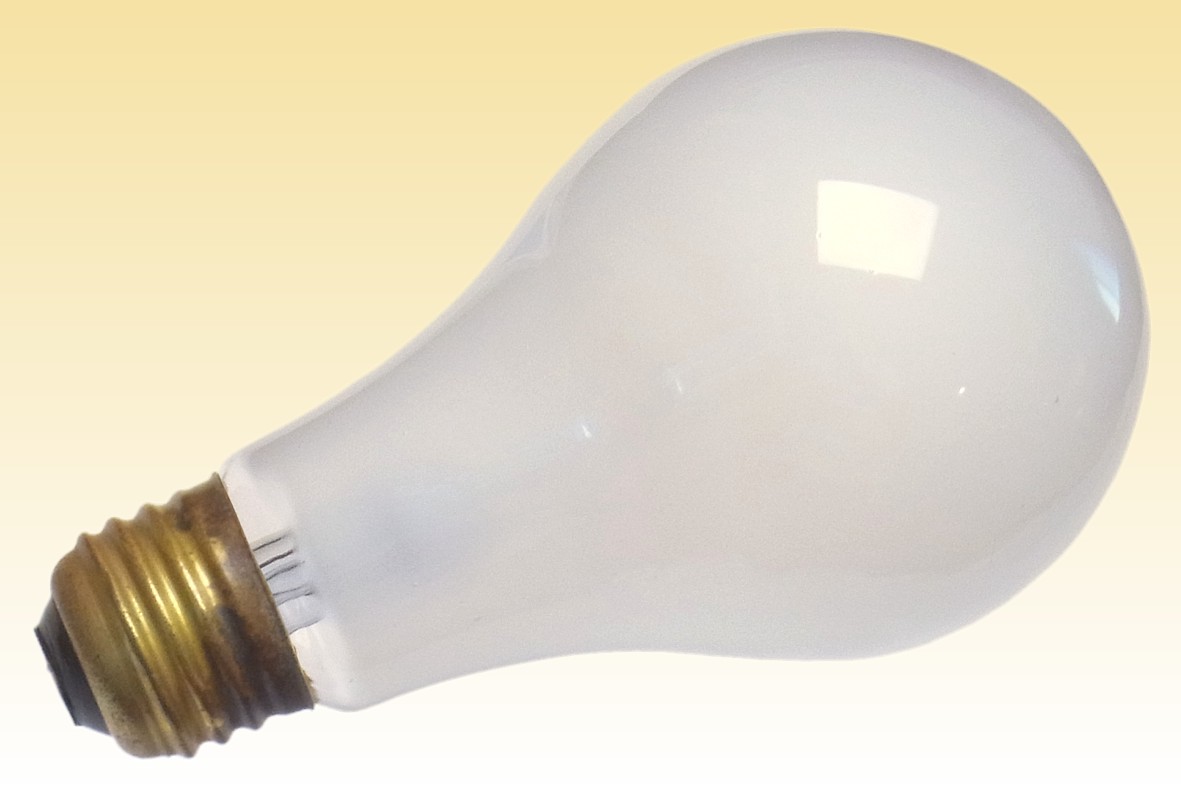
|
Inside Frosted 'Pearl' A-Line Incandescent |

Earlier frosting techniques had to be applied on the outside, which is in compression and much stronger than the inner surface which is always in tension. But the rough external surface quickly attracted dust and reduced light output. Pipkin made inside frosting feasible by first etching the glass with an ammonium bifluoride and hydrofluoric acid mixture, then re-strengthening it with a second treatment of dilute acid to smooth the roughened surface. The resulting 'pearl' finish achieved excellent diffusion, less than 1% light absorption, and does not become dirty over time. The now ubiquitous pear-shaped or 'A-line' bulb envelopes were introduced in parallel with the new finish, another major step which standardised lamp designs and reduce costs.
Pipkin's patent was not upheld because a similar technique had already been applied outside the lamp industry, and this his method quickly became the preferred finish among all lamp manufacturers globally. Despite the development of later still improved techniques, it was only displaced in the 1990s when changing environmental regulations frowned upon the excessive quantities of waste hydrofluoric acid being generated by the lamp industry.
This lamp does not bear any date mark, but the Edison brand, packaging artwork and lack of a coiled-coil filament suggest it was made prior to 1936. Curiously, the inner stem is made from pale blue glass, for an unknown reason.




| Manufacturer: | Edison Lamp Works of GE | |
| Lamp Power: | 50 Watts | |
| Lamp Voltage: | 120 Volts | |
| Lamp Current: | 0.42 Amperes | |
| Cap Type: | E26s/25 | Brass & vitrite |
| Bulb Type: | A-67 | A-21 in eighths/inch |
| Bulb Finish: | Inside Frosted | Soda-lime glass |
| Filament Type: | C-9/3s | Single Coil Wreath |
| Atmosphere: | Argon-Nitrogen | Red phosphorus getter |
| Luminous Flux: | Approx. 600 Lumens | |
| Luminous Efficacy: | Approx 12 Lumens per Watt | |
| Beam Intensity: | N/A | |
| Beam Distribution: | N/A | |
| Colour Temperature & CRI: | CCT: 2700 Kelvin | CRI: Ra 100 |
| Chromaticity Co-ordinates: | CCx: 0.460 | CCy: 0.411 |
| Rated Lifetime: | 1000 hours | |
| Burning Position: | Universal | |
| Overall Length: | 125 mm | 415/16 inches |
| Light Centre Length: | 86 mm | 33/8 inches |
| Factory: | Harrison N.J. ? | U.S.A. |
| Date of Manufacture: | Approx. 1925-1936 | |
| Original Value: | US $0.15 (1937) | |
